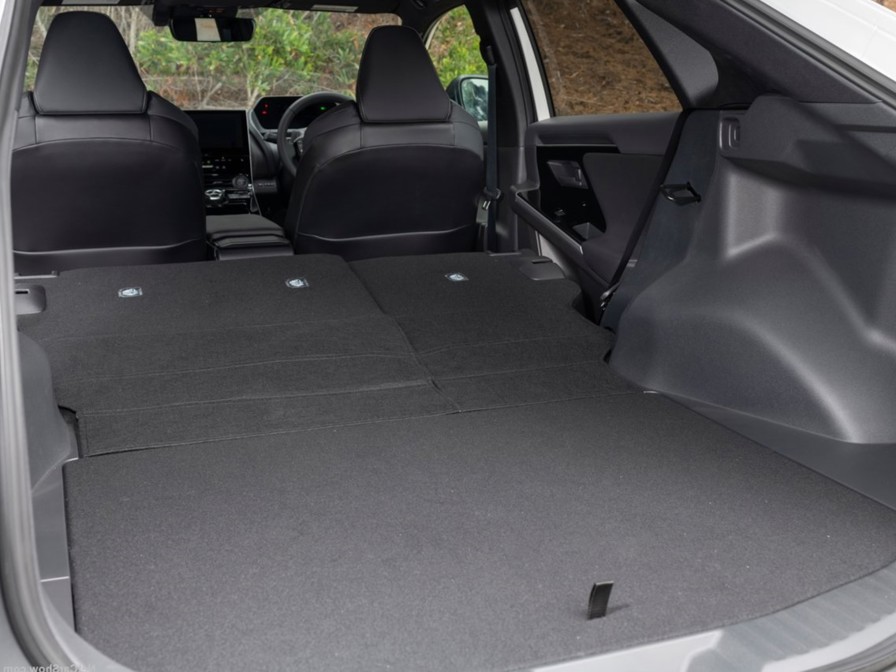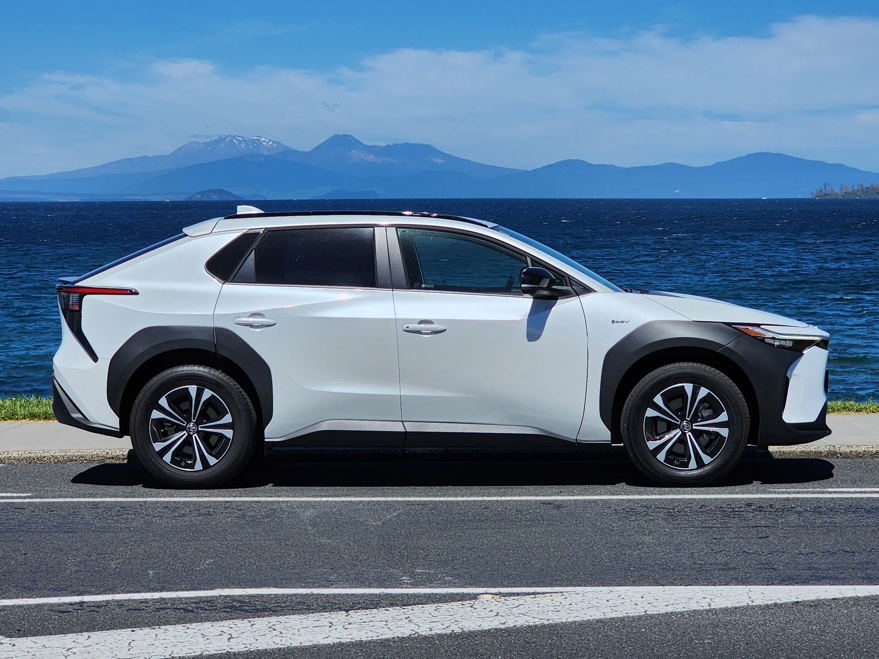This is the second and final report on our extended-term Toyota bZ4X and as promised, we’re undertaking a range test. Not a test of the model lineup; a test of how far it’ll go on a full charge.

We won’t repeat ourselves too much here; you can read our first report if you’d like the whole background. But to recap very quickly, claimed versus-real-world range has been an issue for bZ4X ever since its international launch in 2022.
The indicated range of the cars has been well below the official WLTP figure of 516km of our bZ4X Pure test model, with Toyota essentially saying it's ultra-conservative for safety reasons and makes a huge allowance for air-con and having a bit extra at the bottom end.
Toyota updated the car in late-2023 to be bit less pessimistic. Our car has that new software, but we’ve still found a maximum displayed range of just over 300km and a huge jump when you switch the air-con off: 80-100km when it’s at 100 per cent.

We’ve found that confusing, even more so after driving the sister Subaru Solterra, which showed 430km on the media launch drive, with only a slight variable for air-con. And that was a dual-motor AWD model (the only Solterra available for NZ); our bZ4X is the Pure FWD version, which should be a bit more efficient.
Driving down State Highway 1 is not that interesting. It’s the bit at the end that will be interesting.
The best way to get to the bottom of the issue, we thought, was to charge it up, drive 300km and recharge, to see what it’ll do and (more importantly) what’s left in reserve when it’s reading zero.

So bright and early one weekday morning we charged the car right up to 100 per cent in central Auckland and headed for Taupo, with a couple of meanderings on the way, where we plugged into a Hyper Charger and did the sums.
Open-road driving is hard on EVs; 110km/h motorway running, 80-100km/h on lots of winding, hilly terrain.
This is the bit where we pause and talk about something else for a while, because driving down State Highway 1 is not that interesting. It’s the bit at the end that will be interesting.

But this was indeed an opportunity to solidify our thoughts on the bZ4X as an actual car. Slightly fidgety ride in town aside, we’ve been deeply impressed by the everyday usability of this Toyota. The steering and general handling demeanor are actually quite engaging and it’s a decently practical family SUV as well. Not as spacious as a RAV4, but not far off. And more comfortable for occupants to travel in, we reckon.
We do take Toyota’s point about making new-to-EV customers feel completely comfortable about their range.
The cabin looks wacky but it’s actually pretty well thought-through. We even like the main instrument panel set way forward, above the line of sight of the steering wheel, at the base of the windscreen. Although we reckon the Kiwi-spec Solterra is slightly better, with its flat-top (and bottom) steering wheel that gives a truly unimpeded view of the display.

We did also undercover a slight flaw in the cabin-plan during our road trip. While it looks like there are loads of welcoming surfaces around, there’s actually very little easily accessible storage for small items. There’s a neat lidded box for your phone (with wireless charging), cupholders and a centre console box, but we did genuinely find ourselves fishing around quite a bit to put personal items away. Well, bags of lollies at any rate. No glovebox of any kind, although gloveboxes in modern cars do tend to be tiny anyway.
But back to business. To cut to the chase, we hit Taupo at very close to 300km for an average consumption of 19kWh/100km. Quite high, but remember open-road driving is very hard on EVs; we’re talking 110km/h motorway running, 80-100km/h on lots of winding, hilly terrain for this trip. So that’s not bad.

The bZ4X’s battery is 71.4kWh, with 64kWh usable. That’s a little smaller than the class average but even at 19kWh that’s a range of 340km at high speed. With the air-con blazing. So that tracks.
Anyway, we plugged the car in at exactly 10 per cent charge and it took 1hr 22min to get it to 100 per cent, taking advantage of the bZ4X’s 150kW maximum charge rate and changes Toyota says have been made to allow it to replenish faster from 80-100 per cent.

If that 10 per cent was genuine, it should theoretically have taken 58kWh to charge the battery back to 100 per cent. It actually took 54kWh. And we’re actually getting really bogged down in numbers now.
But in practical terms, that means there’s about 6 per cent of battery left even when the range reading is zero. So if you were silly enough to get to that point, driving on gently in Eco mode, air-con off, there would be another 30-40km – maybe even more – to get you to a place to charge.

That’s not to say we’d recommend it. But we do take Toyota’s point about making new-to-EV customers feel completely comfortable about their range. And we did find the reading was quite dynamic on our trip, continually adjusting to the conditions as we drove along. If you take the readings as gospel and drive to that information, you can really trust the bZ4X as an EV. Trust, Toyota; seems right.
We’re still confused about the range readings in town, however. If it can easily do 300km on a trip, it should definitely be offering up an indicated 400km-plus in urban driving.

You might ask why we didn’t just do a similar test in town driving. Good point, but our early-build car had a few issues, one of which was a very temperamental connector on the charge port that was regularly rejecting both AC and DC plugs. So we were grappling with that a bit during our time and charging whenever the technology would work, rather than trying to stretch things out.
We’d be keen to drive a Kiwi-spec car when one’s available, to see what the final, more polished package is like. The bZ4X is certainly one of the more engaging mainstream BEVs on the market in our book. And we’ve canvassed a range of opinions.
TOYOTA BZ4X PURE
BATTERY: 71kWh battery with single electric motor
POWER: 150kW/266Nm
GEARBOX: Single-speed automatic, FWD
0-100KM/H: 7.5sec
RANGE: 516km (WLTP), maximum charge rate 150kW
PRICE: $72,990
